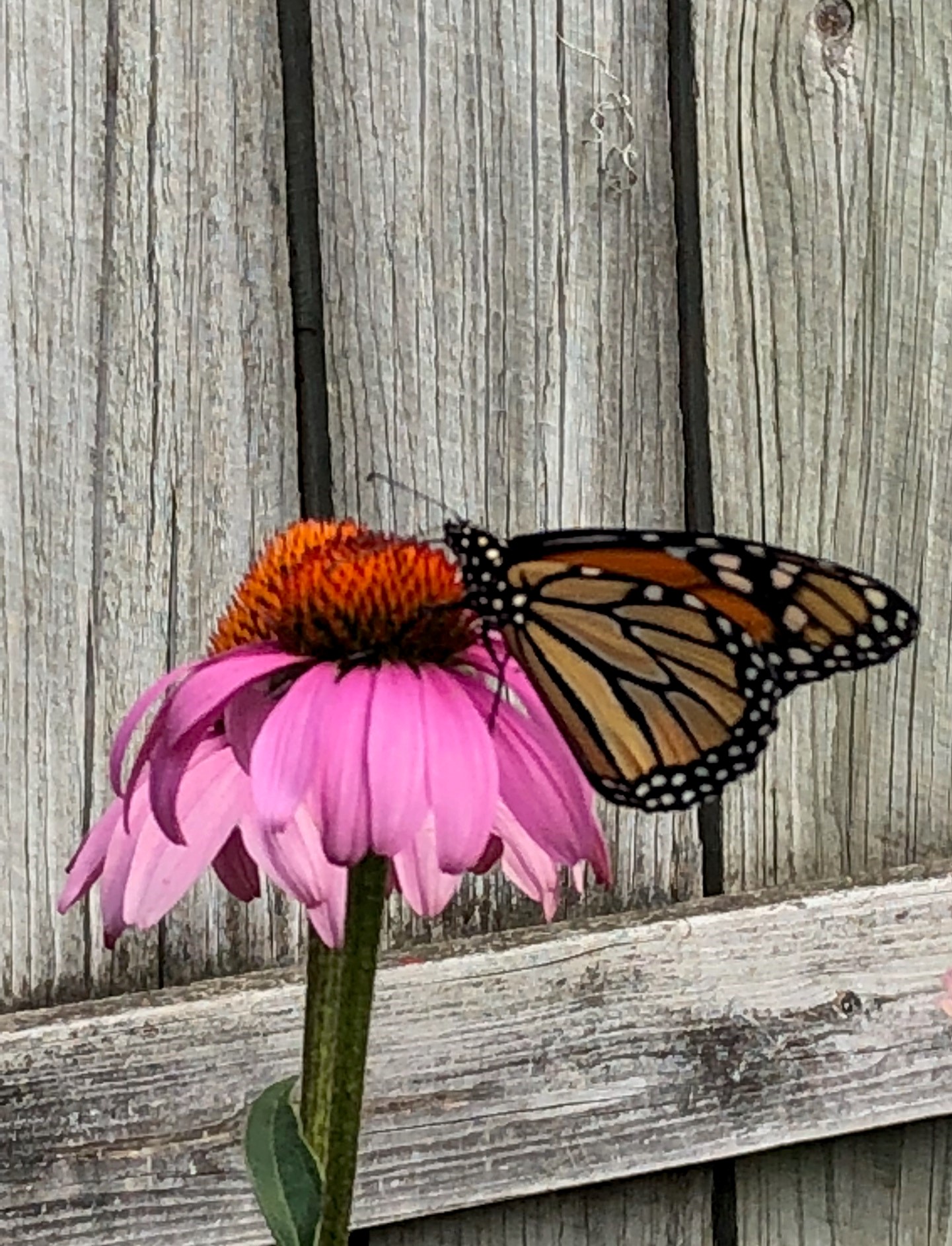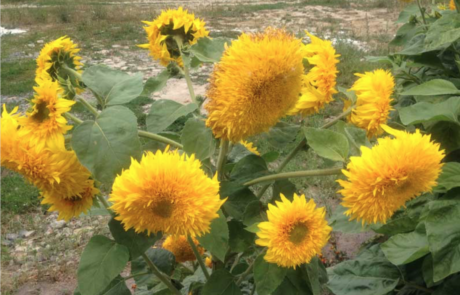Garden Patch Newsletter Q1 2020
Does your bee have a winter coat?
When the outside temperatures drop to about 55 degrees, it signals the bees to start gathering for winter warmth.
Bees are active all winter long, unlike some insects that lay eggs in the fall then die in the winter only to be succeeded by their young. They also don’t hibernate. The bee is cold blooded, so the hive must maintain a warm temperature to keep the colony alive.
They accomplish this through clustering. The bees attach themselves to each other with the queen in the center of the cluster. The movement of their bodies through shivering and wing flapping creates warmth and keeps the queen at around 90 degrees in the center of the cluster.
For more information on this subject see:
https://www.keepingbackyardbees.com/what-do-bees-do-all-winter/
https://www.beeculture.com/winter-colony-development/

Jumping Worms a New Invasive Threat
Most earthworms we find in our garden are non native species coming from Europe or Asia. However, a new breed called jumping worms presents a new threat. They grow twice as fast as earthworms stripping the forest floor of nutrients necessary for wildflowers and forests. To learn more about these invasive see the attachment.


Our Flying Stained Glass Windows
Monarchs’ size and arresting looks have something to do with their growing appeal: Among North America’s largest butterflies, they have a wingspan of up to 4 inches and an intricate black, white and orange pattern that is easy to spot. Yosemite National Park ranger naturalist Erik Westerlund calls them “stained glass windows.” Another reason for the fascination with monarchs stems from their unique life history. Every spring, millions of monarchs head north from their wintering grounds in Mexico and California (and to a lesser extent, Florida). Then in late summer and fall, those monarchs’ descendants head back south. The journey takes the butterflies over virtually every corner of the Lower 48, from coasts to mountain ranges to deserts.
To read more about these flying stained-glass windows see:

Our Mural Represents a Bouquet of Diversity
As you drive by our latest community mural on the corner of Niagara and Amherst St you will notice the words ‘We Are” and a bouget of flowers. Those flowers represent the home countries where some of our newest neighbors are from. Read more about these surprising flowers and what countries they represent.
Sunflower
The Ukraine’s National Flower
Sunflower LoveSunflowers (sunyashniki) are especially loved in Ukraine, where golden fields of them face the sunrise in the east. They are Ukraine’s national flower, and in folk imagery represent the warmth and power of the sun, which was worshipped by pre-Christian Slavs.
In a strange twist, the fact that Ukraine is one of the world’s largest producers and exporters of sunflower seeds and sunflower oil is partly due not to pagan practices, but to those of the Orthodox Church.
Sunflower BackstorySunflowers made their way to Ukraine through the efforts of the early explorers of North America, where it was one of only a few native food crops (along with squash, blueberries and pecans). Seeds were brought back to the old world, and found to grow well in hot, dry places with rich soil, such as the “Black Earth” regions of Ukraine.
The Orthodox Church comes into the story because during Lent, believers were not supposed to use butter or lard for cooking. Since sunflower oil was a fairly recent arrival, there were no specific restrictions on its use. Sunflower culture took off. By the 1800s, there were big fields of them all over Ukraine and western parts of Russia, and people were chewing the seeds and spitting out the shells.
Sunflower SnacksLater, Soviet plant breeders developed a line of sunflowers that produces much more oil, and oil of a type that doesn’t go bad when it’s heated to a high temperature. In the 1990s, when the world began to turn away from trans-fats, the new sunflower oil quickly became popular– especially for frying potato chips – and even more fields were planted.
Today this versatile crop covers huge swathes of central Ukraine, bringing joy, beauty, symbolism, and snacks to the people of Ukraine – and the world – by way of the ever-powerful energy of the sun.
Yellow Paduak
National Flower of Myanmar
In Myanmar, the most widely celebrated Thingyan Festival coincides with the Padauk blossom time, Padauk being the national flower. The streets are ablaze with golden blossoms of Burmese Padauk during the traditional new year season, and the people of Myanmar lovingly refer to them as “Thingyan flowers.”
Rhododendron
The National Flower of Nepal
The national flower of Nepal is ‘Rhododendron‘ and the Nepali name of the flower is ‘Laliguras’. Lali guras it’s a red colours flower that you can see in the nepali currency also. These flowers are usually tubular-, funnel-, or bell-shaped—and often fragrant. The rhododendron flower symbolizes caution and danger.
FLOR MAGA
Puerto Rico’s Official National Flower
Puerto Rico’s national flower is the flor de maga. The Maga is closely related to hibiscus but unlike the common hibiscus, the Maga is a saucer size flower and grows on a large tree. The maga is native to Puerto Rico and is grown in tropical climates as an ornamental plant, with pink or red flowers.
The flower of the maga tree, Thespesia grandiflora or Maga grandiflora grows near San Juan in north-eastern Puerto Rico. This giant flower is endemic to the humid forests of Puerto Rico, so it can be also found in other areas of the island. It is cultivated mostly as an ornamental tree for the beauty of its very large flowers although it is also valued elsewhere for its durable timber, which is used for furniture.
Tulip
National Flower of Hungary
There are so many reasons that why tulip is the national flower of Hungary, The core reason is that they were the sultan’s favorite and are available in excess amount throughout the country. They are available in almost every color and they considered White tulip as the sign of peace, Red tulip as the sign of love and yellow tulip as the sign of friendship, and tulips also symbolize the sign of wealth in ancient tradition.
Red Poppy
National Flower of Poland
Red Poppy, a flower with vivid red four petals, most commonly with a black spot at their base. is the national flower of Poland. Most people associate this flower with its growth in fields after World War I, especially Flanders Field.





